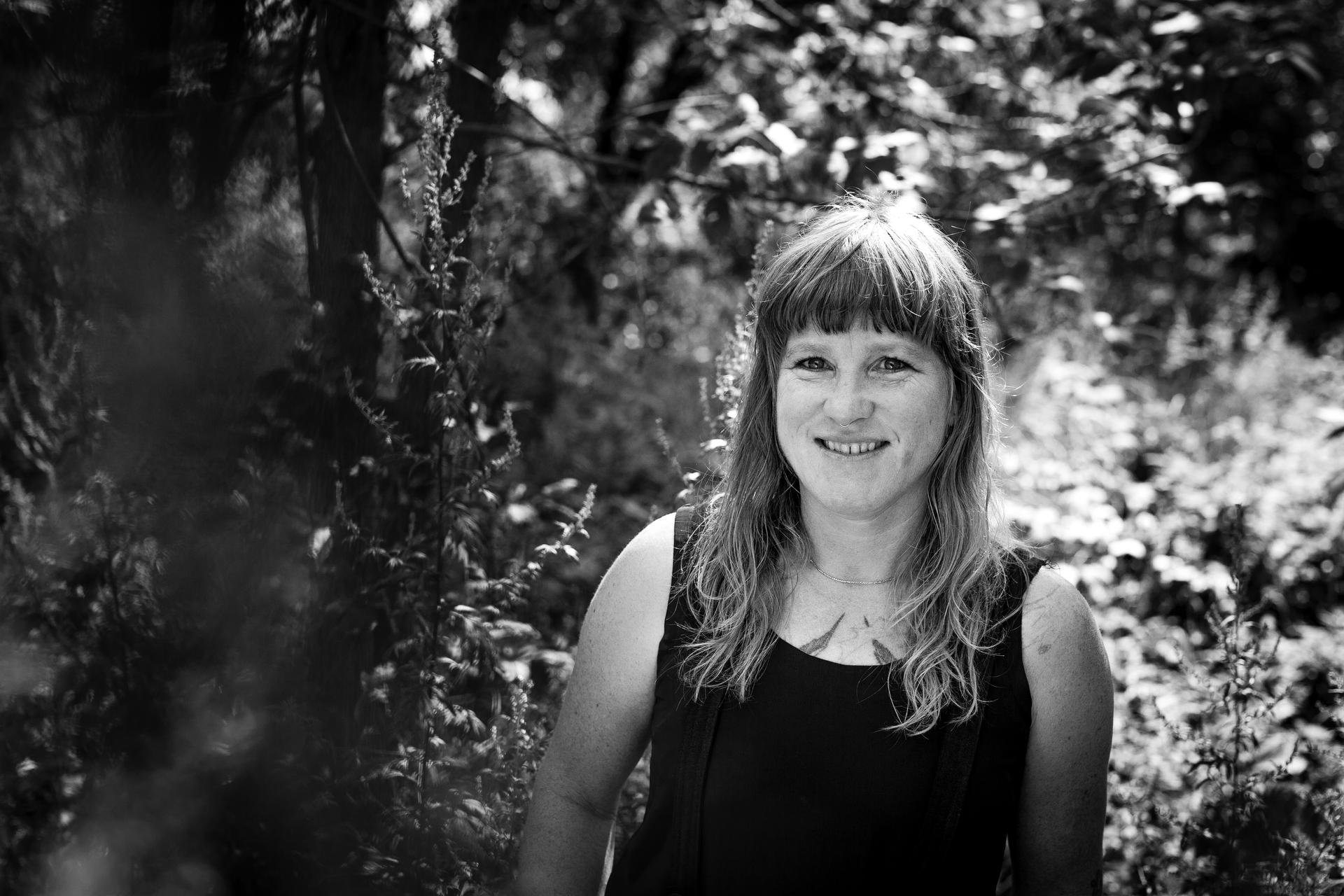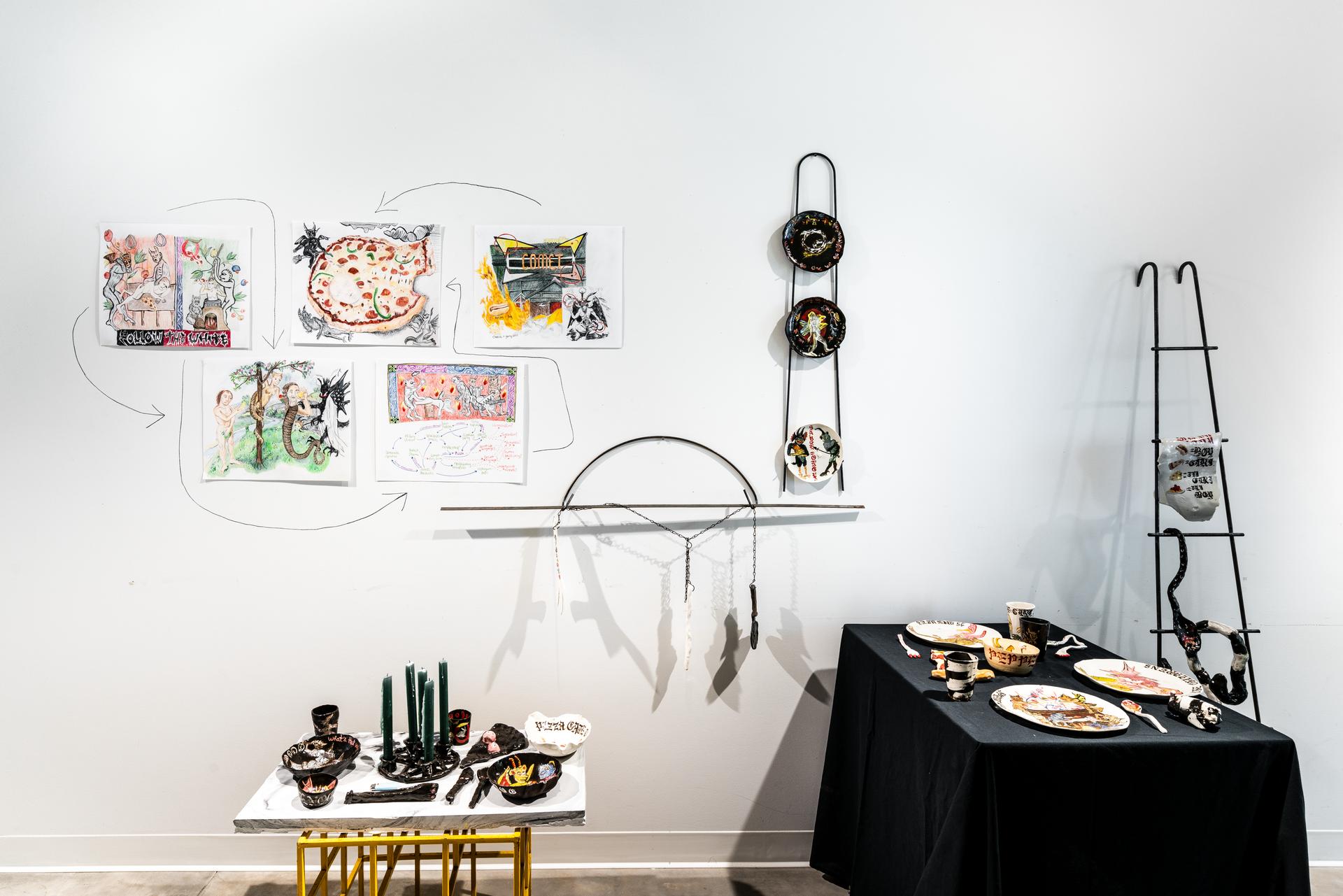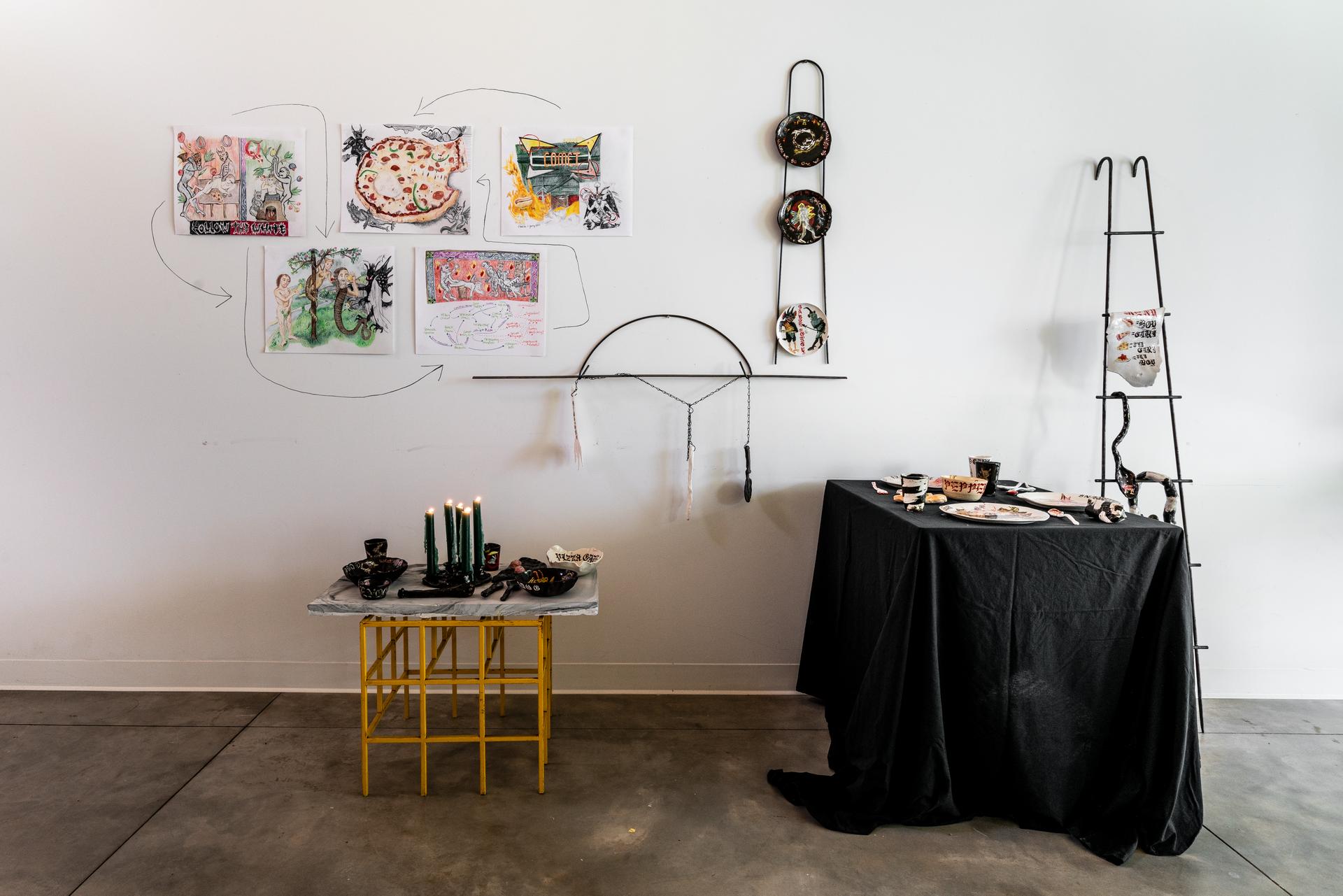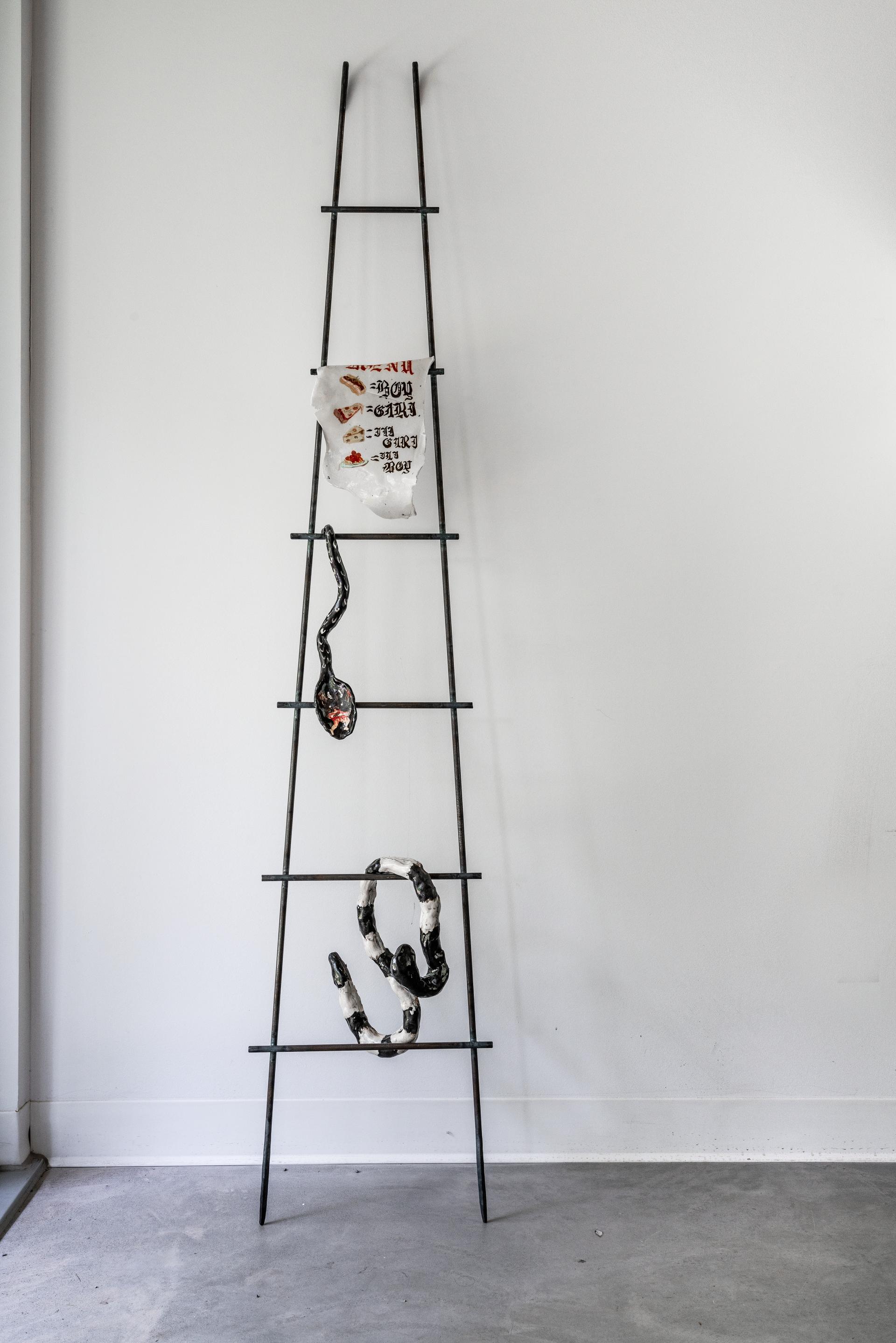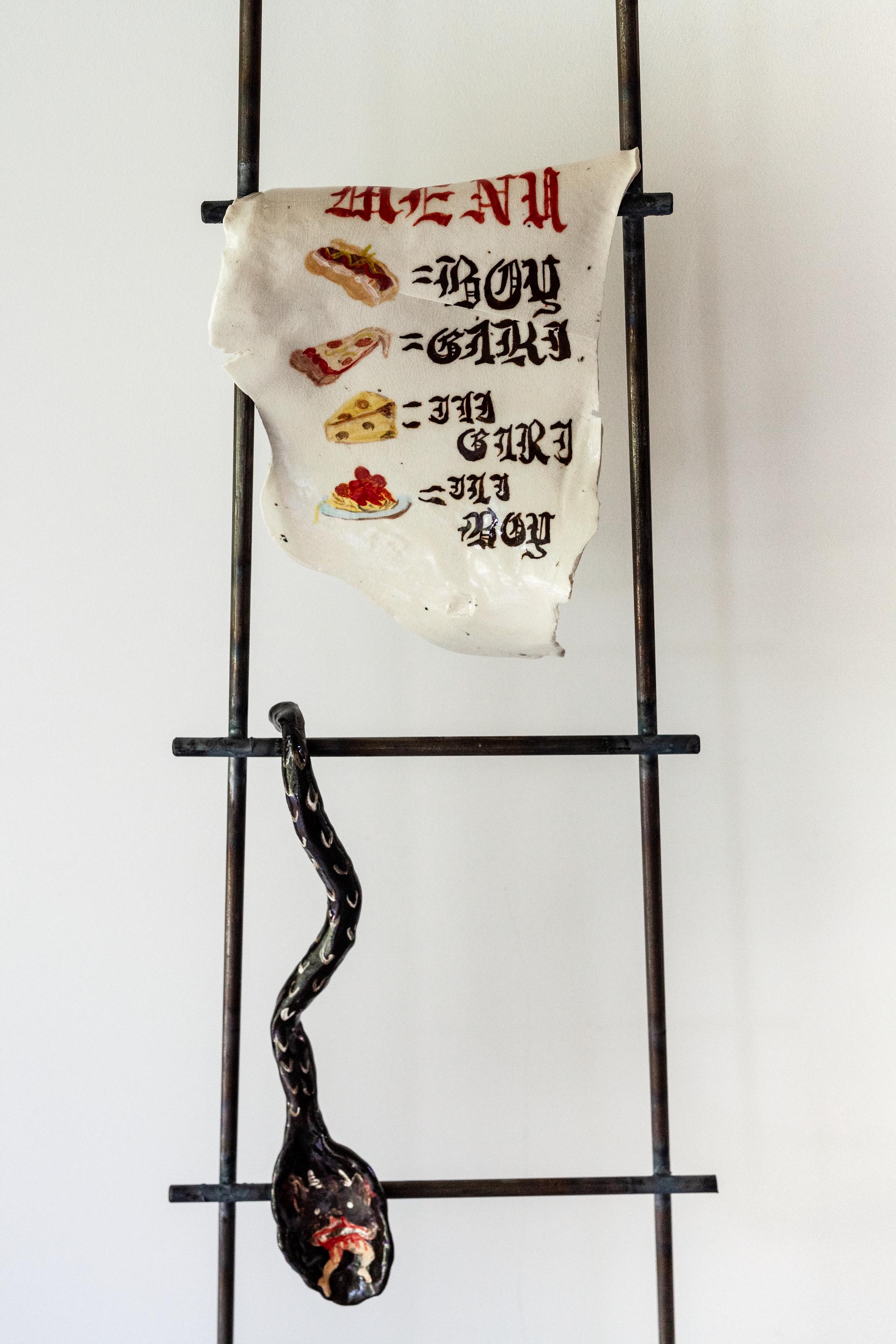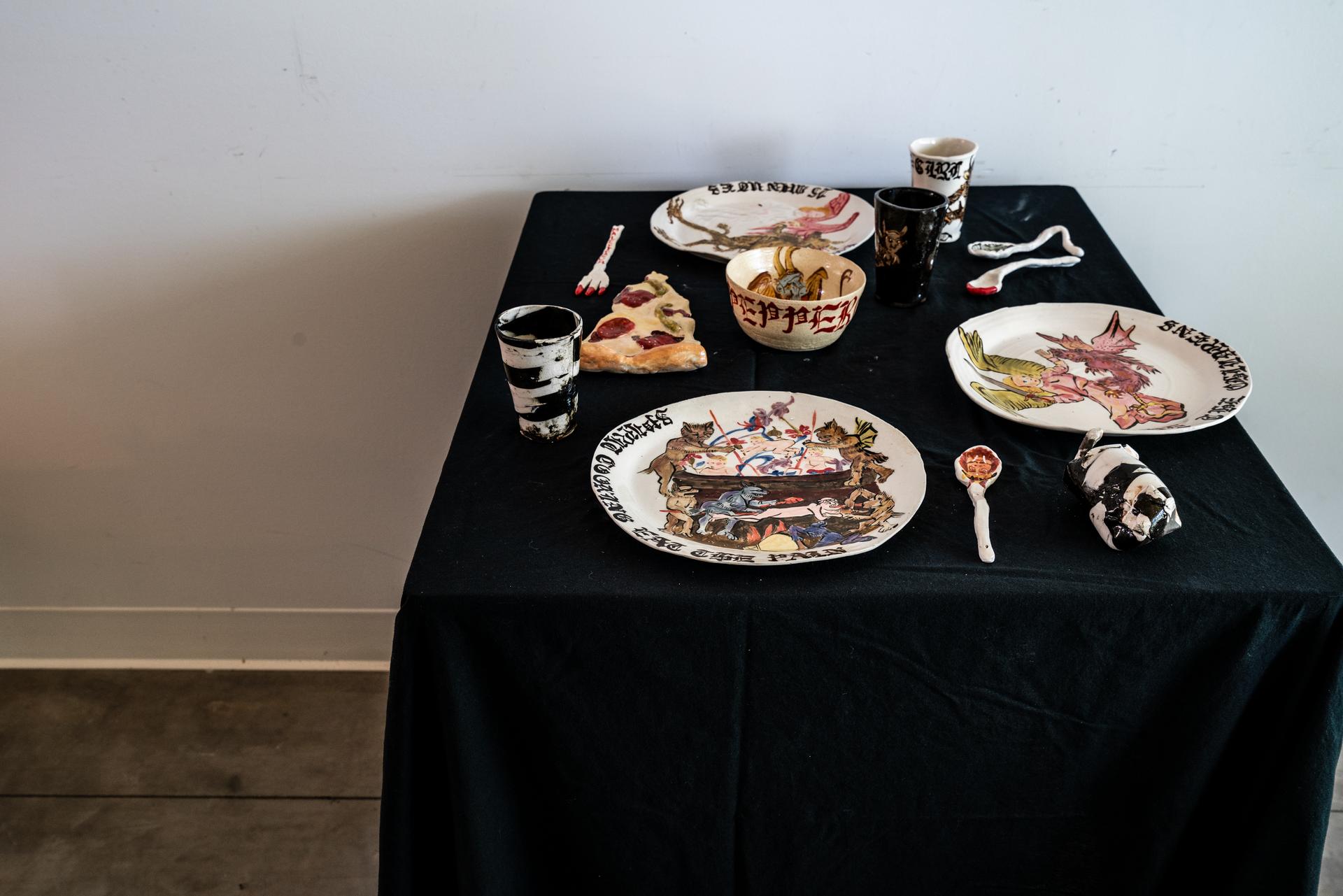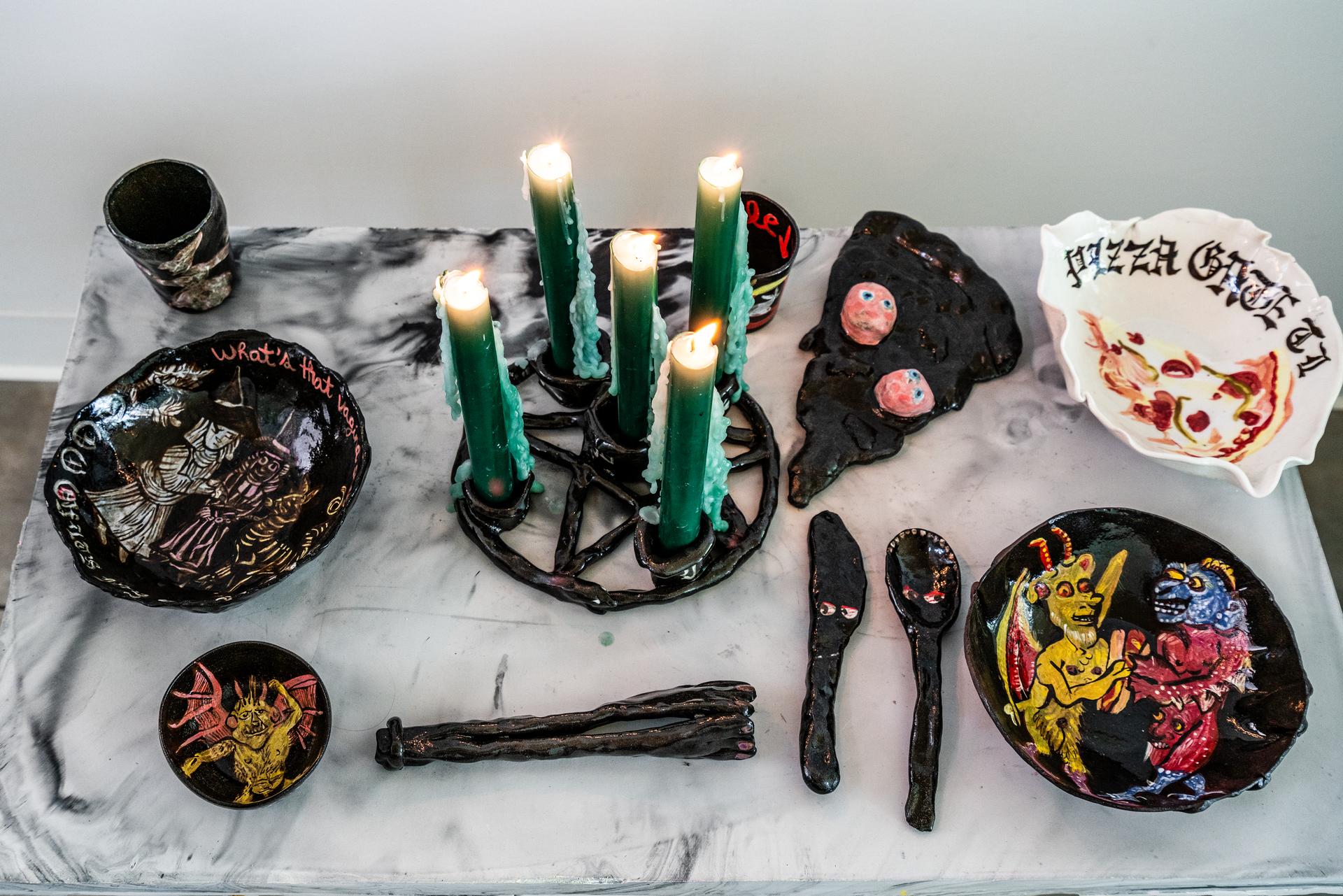
Jacinthe Loranger
Testimony
So I fell down the rabbit hole, like in Alice in Wonderland, one conspiracy theory after another …
As Jacinthe Loranger was exploring work with coloured plaster, photographic compositions, and sculptures made of found objects and trash, the pandemic came along and wreaked havoc on her plans and interests. The burgeoning of conspiracy-theory voices in the public space, on social media, and sometimes even among her friends began to fascinate her. In a sort of reversal of the playful pop culture and assumed kitsch that she had often exploited in larger-than-life installations, the research she conducted at Est-Nord-Est explored the dark side of popular beliefs, from worldwide conspiracy theories to Satanism, intercut with tragic yet absurd references to Pizzagate. It was all mixed with a good dose of humour, because it’s better to laugh than to cry.
In the studio, a number of drawings sat alongside ceramic artefacts presented in a restaurant (pizzeria?) setting: pizza slice (cheesy or burned to a crisp?), stained dishes and utensils (stained with sauce or with blood?), plates with angel and demon motifs decorated with infernal or witchcraft scenes, and pentagram-shaped chandeliers. All of this was extended into the imagery and graphic style of the drawings, borrowed from medieval illuminations, in which the dichotomy of good and evil was central. Focusing on the false news of our times, Loranger’s graphic works reproduce the mixture of true and false that leads to esoteric beliefs and conspiracy theories. When we look more closely, as Loranger did in preparation of the works, the surprising internal functioning of this mode of thought and the appearance of accuracy or logical links between the “facts” brought up, presented as coded languages, is almost convincing. Seen as a whole, the body of work developed here both makes us smile and gives us shivers, hardly leaving any doubt about what we believe, or could believe. Perhaps your conspiracy-theorist friend on Facebook is right, in the end … or not.
Biography
Jacinthe Loranger’s practice involves serigraphy and is deployed in different forms, including installations, the making of objects, and collages. These assemblages result in still lifes that trace a neurotic portrait of everyday life. The compositions, sometimes macabre and often luminous, contain many elements that evoke a flea-market aesthetic. In her works, Loranger features great tragicomedies, both banal and ridiculous, in crowded settings the apparent opulence of which crumbles to reveal the themes of sexuality, death, disappearance, and apocalypse. Although her vision of the future is dystopic, it is not nihilistic. On the contrary, she likes to imagine that the ruins of the future offer a myriad of new avenues to explore.
Discover
Newsletter
Keep up to date with the latest news!
